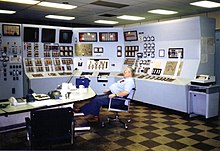Automation


In the context of engineering, automation is when a device or a machine is changed in such a way that it can fulfill the task it was designed for without the need of human interaction. Very often, this means that the machine is fitted with an additional system which takes control of its functions. For example, a centrifugal governor controls a steam engine.
Benefits of automation are that the output of the machine or device are more uniform, and that product quality is improved. A system that is not fully automated needs human interaction is needed: Many of the tasks involved are repetitive and boring. In general, machines are also designed so that humans no longer need to lift heavy weights or do dangerous things. With automation, human intervention is limited or absent.


